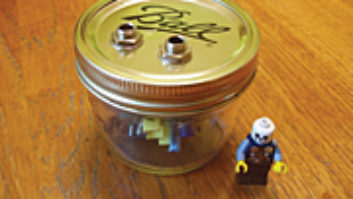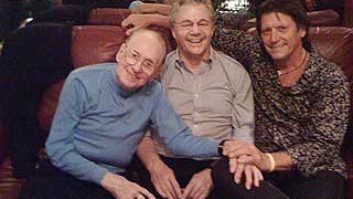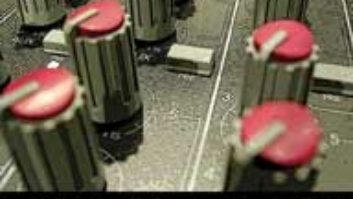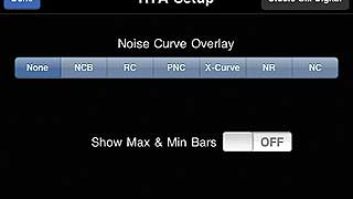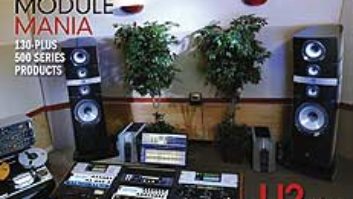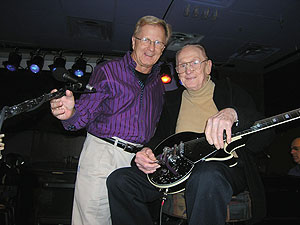
Bob Heil (left) and Les Paul at Iridium Jazz Club in New York City in 2007
Bob and Sarah Heil on Les Paul
Les and I share adjoining displays in the Rock and Roll Hall of Fame Museum in Cleveland. I have seen and met him throughout my years at many NAMM shows, but after the Rock Hall honored Heil Sound with the only display from a manufacturer, our friendship grew closer.
My last time to be with him was at the AES show in 2007. He came by the booth to say “hello,” and invited Sarah and me to his afternoon soundcheck at the Iridium as the club had installed Heil microphones. It was an afternoon of sheer enjoyment and excitement to be with Les and his son, Rusty. Of course, he had us stay for the show and gave me permission to record him, so I brought out my trusty little Walkman MiniDisc and a pair of Heil Sound’s small 4-inch-long Handi Mics that I laid on the floor in front of him.
After the soundcheck, we sat in the green room, listening to Les tell about some of his wonderful groundbreaking experiments with the Ampex recorder that Bing Crosby had given him and, of course, that led into his “bodiless” guitar experiments. It was just so fascinating to hear about these things that we all grew up around, but hearing it from Les was something so special. In turn, he wanted to know about my experiments with the pipe organs, huge ham radio antennas [with which] I bounced signals off the moon, and that led him to get into how we came to design the new technology of large-diaphragm dynamic microphones that he had just discovered and loved.
This was something that Sarah and I [will] never forget. Cherish the memories forever and hope to live a life as long and enjoyable as Les Paul. He truly can be called a legend.
Bob and Sarah Heil
More on Les Paul
I’d met Les numerous times through mutual friends. He was always gracious and friendly, though I was never completely sure that he knew exactly what I did. But I always looked forward to a friendly handshake and a short chat at the Audio Engineering Society conventions. I’ll miss that this year.
I do have one little chapter to share. On Sunday afternoon, August 21, 1994, Les came to the Thomas A. Edison National Historic Site in West Orange, N.J. That site is about 10 minutes from House of Music Studios where the Synergy [electronic music] albums were all recorded. The Edison Laboratories were where the recording industry was born. Les, accompanied by Lou Pallo, was recorded that afternoon by cylinder recordist Peter N. Dilg into an 1890s-vintage, horn-pickup, acoustic wax-cylinder recording machine. I thoroughly enjoyed the convergence of the oldest recording technology being used to record one of the men who advanced the art so significantly, playing his signature electric guitar into a Fender Twin Reverb, with a 100-year-old acoustic horn shoved up against the guitar amp speakers. The perfect blend of art and technology.
Larry Fast
The Producer’s Job Description
I just cracked the September issue of Mix and when I saw “From the Editor: So You Wanna Be a Producer…” I thought to myself, “Yes, I wanna be a producer.” And then I thought that it was really great that, after decades of being a producer, I still “wanna” do it.
Then I read of producer Dann Huff’s horror at the prospect of being asked what a producer does (“Q&A: Dann Huff”). I find it fascinating that most working producers know exactly what the job requires, but are at a total loss to articulate the job description. The tasks required to accomplish the job vary with every project — and yet the job description remains the same.
Sometimes the most important function of the producer is to order lunch; sometimes it is to find the perfect song for the artist; sometimes it is to do nothing; sometimes it is to choose an appropriate recording format; sometimes it is bailing an artist out of jail; and sometimes it is just keeping an eye on the clock so as to not go horribly over budget, etc. Very early in my career I found that not only did I need to explain what a producer is to family and friends, but I had to also explain it to clients to explain why I would be an essential part of their project.
I humbly offer my definition of what the job of producer is: A producer is the liaison between the song, the artist and the medium.
Phil Appelbaum
Thunder Digital
Albuquerque, N.M.
Classic Sampler
Producer David Kahne gave Gaby Alter some wrong information regarding the Emulator used for The Bangles (“Classic Tracks: The Bangles — ‘Walk Like an Egyptian,’” September 2009). The only E-mu sampler that could hold 8 megs of RAM in the 1980s was the Emulator III, which was not released until more than a year after The Bangles’ album [Different Light] was released, and it couldn’t perform 8-bit playback as he claimed. If he was referring to the Emulator II, which was an 8-bit machine, its street price, new, was $5,900 and it could only hold up to 1 meg of RAM.
Plex Barnhart
For more remembrances of Les Paul from leading members of the pro audio community, see Mix‘s special Les Paul Tribute from the October 2009 issue atmixonline.comand Mix‘s Les Paul Tribute page atmixonline.com/ms/les_paul.
Next month, Mix goes in-depth into the world of mastering. Tell us how mastering has helped your projects in the past. E-mail us at mixeditorial@mixonline .com.

